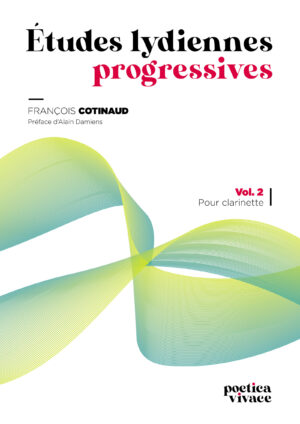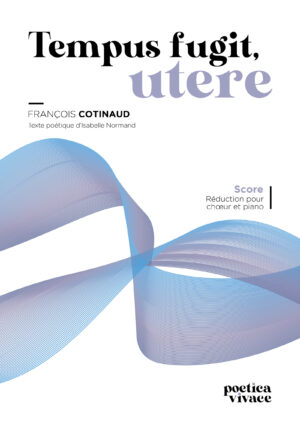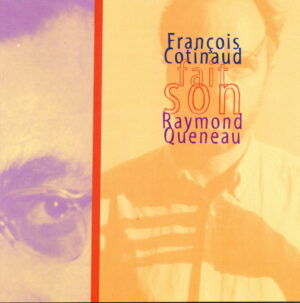LYDIAN PROGRESSIVE STUDIES – Vol. 1 – for clarinet (+ piano)
17,50€
Lydian progressive studies for clarinet. 40 pages. – Vol. 1
For clarinet (rather easy), with piano along (medium difficult)
When you have already paid, it is possible to request a free separated part of clarinet, or the same for piano.
Foreword by Alain Damiens, et note from the author in french, english and german.
If you wish a translation of the forewort in japonese, or in spanish, write it right before payment.
Description
The Etudes lydiennes progressives for clarinet by François Cotinaud stand out as a very interesting exception within the large corpus of pedagogical books written for this instrument.
These studies enable the player to experiment with and master many aspects of clarinet playing (finger and mouth work, breathing, the management of registers) in a subtle and skillful manner. In this respect, these pieces truly are ‘studies’.
However, the value of these pieces extends far beyond such aspects. This is the work of a composer who has first hand experience of many diverse aesthetic approaches, both as a composer and an instrumentalist. The various series of studies make up a set of miniatures with an identity of their own and at the same time consistent as a whole which may thus be structured or organized by musicians as they wish. Unity and diversity are not contradictory. Whichever organization is chosen by the performer, the music can find its place within a concert programme or as incidental music in stage, choreographic or multimedia projects, for instance.
Personally, I see these pieces as following in the footsteps of some great creators of the twentieth century who have shown a particular interest in the clarinet (Berio, Pousseur, Denisov) as well as of some brilliant jazz improvisers who were their contemporaries.
These connections have something to do with George Russell’s Lydian Chromatic Concept which François Cotinaud uses as the structuring principle lying at the heart of these pieces. It involves a ‘non tonal, modal approach’ which can be seen in the musical DNA of the composers mentioned above as well as numerous great jazz performers: Berio and Pousseur, for example, looked beyond twelve-tone serialism, without disowning it, while chromaticism is closely intertwined with modes in sustaining choruses from Ch. Parker to J. Coltrane via T. Monk (to name but a few).
Therefore, I recommend that all clarinetists find a special place for this collection on their shelves but also, more importantly, in the repertoire that they practise and perform. They, along with their audiences, will undoubtedly become aware that the word ‘studies’ means a great deal more in this case than what it generally suggests.
Alain DAMIENS (translated by Bérengère Battarbee-Mauduit)
Additional Information
| Weight | 0,150 kg |
|---|---|
| Dimensions | 29,7 × 21 cm |







